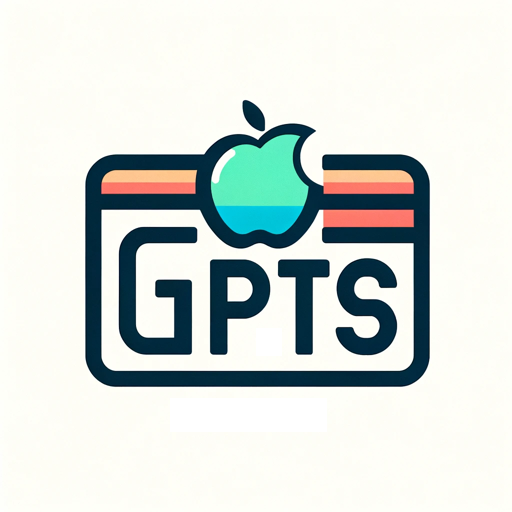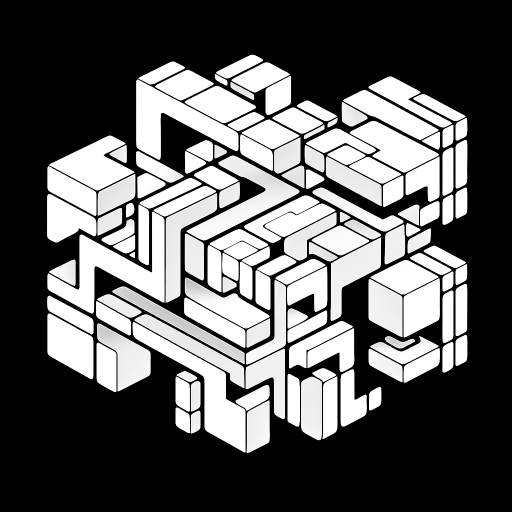Big O GPT-AI code complexity analysis tool
AI-powered analysis of code complexity
Analyze the complexity of this code:
What's the time complexity here?
Explain the memory usage of this function:
Assess the efficiency of this algorithm:
Related Tools
Load More
GPTs Works
Third-party GPTs store, chat for searching GPTs.

GPT Instruction Genius
[V4] Crafts detailed instructions from your ideas, to create GPTs that provide structured and consistent outputs. Tip: Write '/changelog' to see the latest changes!

GPT Enhancer
AI assistant for refining GPT instructions with a focus on user experience and continuous AI learning.

Code GPT GPT
So meta. Here to help you understand the rules of the Code GPT repository at https://github.com/Decron/Code-GPT/

GPT Pro
Versatile assistant with ChatGPT 4.0's conversational style, for analysis, creation, and research.

GPT on steroids
Your knowledgeable, helpful, and engaging AI assistant.
20.0 / 5 (200 votes)
Overview of Big O GPT
Big O GPT is a specialized AI designed to analyze and compute the time and memory complexity of code. Its primary function is to help developers understand the computational costs associated with algorithms and code snippets, focusing on Big O notation to describe the upper bounds of performance. Big O GPT evaluates both time complexity, which refers to how an algorithm's running time grows as the input size increases, and memory complexity, which addresses the space requirements. It is tailored for providing technical, precise insights into how code behaves at scale. An example of this in action would be analyzing a sorting algorithm like Quicksort. Big O GPT can explain that Quicksort has an average-case time complexity of O(n log n) and a worst-case complexity of O(n^2), illustrating how different input cases affect its performance.

Key Functions of Big O GPT
Time Complexity Analysis
Example
Analyzing a nested loop that runs through a matrix of size n x m, where each element is accessed once, would yield a time complexity of O(n * m).
Scenario
A developer working on a pathfinding algorithm for a grid-based game wants to understand how the execution time scales with the size of the grid.
Memory Complexity Analysis
Example
For a function that uses a list of size n to store intermediate results, Big O GPT would deduce a space complexity of O(n).
Scenario
An engineer optimizing an AI model's inference phase is concerned about memory usage and asks for a breakdown of how much space the model takes up when handling large datasets.
Complexity Comparisons
Example
Given two different algorithms for searching an unsorted list, such as linear search (O(n)) and binary search (O(log n)), Big O GPT explains which algorithm performs better and in what scenarios.
Scenario
A software architect comparing different database indexing strategies seeks advice on which approach would yield faster query performance at scale.
Target Users of Big O GPT
Software Developers and Engineers
Developers working with performance-critical applications, such as those in fintech, gaming, or data science, benefit from Big O GPT's ability to analyze algorithmic efficiency. By understanding time and space complexity, they can write optimized code that scales well.
Computer Science Students and Educators
Students learning algorithms and data structures can use Big O GPT to reinforce their understanding of time and space complexity concepts. Educators can also leverage it to break down the complexities of various algorithms for teaching purposes, offering clear, detailed examples.

Guidelines for Using Big O GPT
1
Visit aichatonline.org for a free trial without login, no need for ChatGPT Plus.
2
Prepare a code snippet you want to analyze, focusing on assessing time and space complexity.
3
Submit the code to Big O GPT for an in-depth complexity analysis, either by pasting the code directly or uploading a file.
4
Review the detailed analysis, which includes time complexity, space complexity, and an explanation of key operations in the code.
5
Iterate and refine your code based on the complexity insights provided by Big O GPT for optimization.
Try other advanced and practical GPTs
PDF Ninja
AI-Powered PDF Data Extraction

🐸科学减脂-小青
AI-powered fat-loss coaching for sustainable results.

Gordon Ramsey GPT
AI-powered expert culinary assistance

Skyrim GPT
AI-powered interactive storytelling for Skyrim fans

Karl-MarxGPT
AI-driven analysis of Marxist theory.

Airdrop Hunter
AI-powered cryptocurrency airdrop discovery

Prompt Polisher
Enhance Your Prompts with AI

Career Tailor
AI-powered career document optimizer

Dating coach
Enhance your dating life with AI-driven coaching.

Dream 11 Fantasy Cricket
AI-powered Fantasy Cricket Team Builder

The Ad Copy Professor
AI-Powered Ad Copy for Maximum Impact

Tech Guru GPT
AI-Powered Solutions for Tech Queries

- Code Analysis
- Technical Learning
- Algorithm Optimization
- Complexity Evaluation
- Programming Efficiency
Common Questions about Big O GPT
What does Big O GPT specialize in?
Big O GPT specializes in analyzing the time and space complexity of code. It provides detailed feedback on how efficient a code snippet is in terms of computational and memory resources, making it invaluable for developers focused on optimization.
What types of code can Big O GPT analyze?
Big O GPT can analyze most common programming languages such as Python, Java, C++, and JavaScript. It is designed to evaluate algorithms, loops, recursion, and other core programming constructs for complexity.
Is Big O GPT suitable for both beginners and advanced programmers?
Yes, Big O GPT is beneficial for both. Beginners can learn the fundamentals of algorithmic complexity, while advanced users can utilize it to fine-tune and optimize more sophisticated algorithms.
Does Big O GPT provide real-time feedback?
Yes, Big O GPT provides near-instant feedback on the complexity of submitted code, allowing users to quickly assess performance and make improvements as needed.
Can Big O GPT handle large codebases or just small snippets?
Big O GPT is optimized for code snippets and medium-sized algorithms. For extensive codebases, users may need to break down their analysis into smaller functional sections for more accurate results.